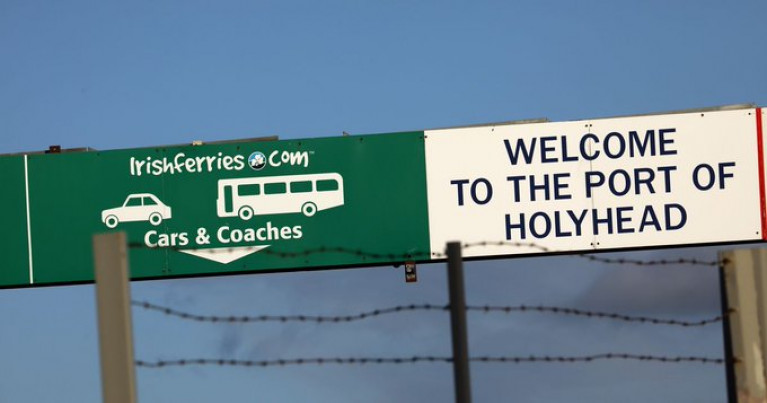Displaying items by tag: HolyheadDublin
Ferry Truckers Bypassing Holyhead-Dublin Route A Sign of 'Brexit Success' Says Boris Johnson
The UK Prime Minister Boris Johnson told how (ferry) truckers bypassing north Wales is a sign of Brexit success.
Speaking (yesterday) at a Liaison Committee with senior MP’s, Mr Johnson was asked about the Brexit related delays at the border.
The PM said that trade between Northern Ireland and Great Britain is flowing so smoothly that many exporters are opting to use the new route and bypassing North Wales in the process.
The landbridge traffic - where Ireland to EU traffic crosses the UK - makes up around 30% of Holyhead's trade.
Mr Johnson was questioned by Labour MP, Darren Jones about the Brexit related delays at the border resulting in food shortages and increased prices.
In response, the PM said: “The situation in Northern Ireland is that trade is flowing smoothly as I understand it and exporters are benefiting from the unfettered access between Great Britain and Northern Ireland.
For much more NorthWalesLive reports here.
Port of Holyhead-Dublin Route 'Running Effectively' Says UK Government Following Funding Criticism
In the UK the government has defended not including the Holyhead to Dublin Port on Irish Sea ferry routes supported with public funding, as NorthWalesLive also reported.
The UK Government has made £17m available to Stena Line, P&O and Seatruck to maintain “critical routes” between ports in England and Scotland and Northern Ireland during the Covid-19 pandemic. The Northern Ireland Executive will cover 40% of the costs.
But the route between Anglesey and Ireland has not been supported - a decision criticised by Welsh Government and Ynys Mon AM Rhun ap Iorwerth.
Now though the UK Government has responded.
A spokesman said: “The Dublin-Holyhead route is running effectively, but the UK and Irish Governments - alongside the Welsh Government - continue to monitor the situation.
More on this ferry development click here
#FerryNews - Ferry operator, Stena Line is set to bring a new giant vessel on the Holyhead-Dublin route reports Daily Post Wales.
Stena Line has confirmed that the first of its new RoPax ferries currently under construction in China is planned to enter service on the Irish Sea route early 2020.
The Stena E-Flexer vessel - which will be among the most energy efficient in the world - will replace the Superfast X on the route.
The new ship will have capacity for 1,000 passengers, 120 cars as well as 3 100 freight lane meters delivering 4 daily sailings with an estimated crossing time of approximately 3.5 hrs.
It is a major vote of confidence in Holyhead at a time where there are concerns about the potential impact of Brexit on the port.
Ian Davies, Stena Line Trade Director Irish Sea South, said: “Freight volumes have surpassed the Celtic Tiger peaks of 2007 and we are confident that this upward trend will continue.
For more on this development including ship stats details, click here.


























































